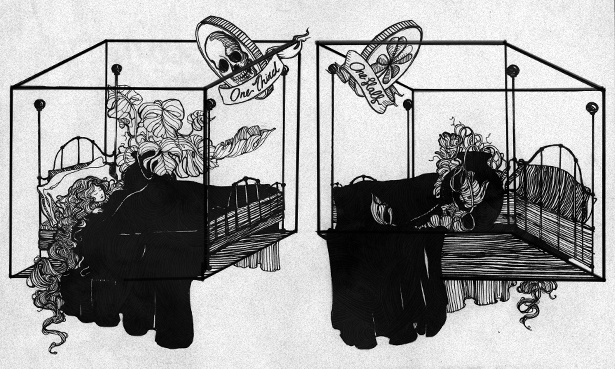by PRADEEP MUTALIK
 ILLUSTRATION/Olena Shmahalo/Quanta Magazine
ILLUSTRATION/Olena Shmahalo/Quanta Magazine
We are used to the idea that perception can be ambiguous — there are visual illusions such as the famous Necker cube that can be perceived in two completely different ways. We accept that both perceptions are equally valid and that it is fruitless to debate which one is “right.” Most of us imagine that such radically different views of the same object cannot occur in the realm of mathematics; after all, we are taught to think that every problem has a single correct answer. As we saw in “The Slippery Eel of Probability,” this is not always the case when the technique to be used in solving the problem is not given. For this month’s Insights puzzle, we consider a famous problem that has divided people across the board and generated endless debate: the Sleeping Beauty problem.
The famous fairy-tale princess Sleeping Beauty participates in an experiment that starts on Sunday. She is told that she will be put to sleep, and while she is asleep a fair coin will be tossed that will determine how the experiment will proceed. If the coin comes up heads, she will be awakened on Monday, interviewed, and put back to sleep, but she won’t remember this awakening. If the coin comes up tails, she will be awakened and interviewed on Monday and Tuesday, again without remembering either awakening. In either case, the experiment ends when she is awakened on Wednesday without being interviewed.
Whenever Sleeping Beauty is awakened and interviewed, she won’t know which day it is or whether she has been awakened before. During each awakening, she is asked: “What is your degree of certainty that the coin landed heads?” What should her answer be?
If you’re having trouble picturing the problem, Julia Galef explains it nicely in this video:
Watch here
This problem has intuitively appealing solutions that are so entrenched that they have been given names: the thirder position and the halfer position. Before we review these, remember that in the Bayesian view of probability, the degree of subjective certainty is constantly updated by new knowledge. Thus, if we knew nothing about a coin toss except that the coin was fair, our subjective probability of it being heads is one-half. But if a hundred reliable witnesses tell us that it was heads, or we see a video of the event, our subjective probability can change from one-half to one.
Let’s see how the thirders and halfers apply this notion to the above problem.
Thirders argue that in the universe of possibilities, there are three possible situations in which Sleeping Beauty could have been awakened, which are indistinguishable to her. The coin could have come up heads and it is Monday, the coin could have come up tails and it is Monday, or the coin could have come up tails and it is Tuesday. Each of these is equally likely from her perspective, so the probability of each is one-third. So her subjective probability that the coin came up heads is one-third.
“Not so fast!” cry the halfers. Since the coin was fair, the chance that it came up heads is half. Sleeping Beauty has received no new information about the result of the coin toss when she is woken up. So her subjective probability that the coin came up heads should continue to be half.
Quanta Magazine for more
